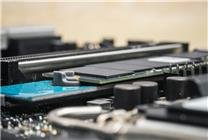Ensuring SSD Safety: Five Essential Habits for Data Security
Summary:
- Recent reports suggested the Win11 update might damage SSDs, leading to widespread concern among users.
- After extensive testing, Microsoft confirmed no harm is caused by the update, although specific conditions could lead to issues.
- Implementing five proactive habits can significantly enhance SSD longevity and data security.
On September 11, alarming reports emerged regarding a Windows 11 update patch that supposedly damaged SSD hard drives. This news sent waves of fear through the tech community, prompting numerous users to uninstall the update as they worried about potential data loss. However, following comprehensive group testing totaling over 4,500 hours, Microsoft clarified that the concerns were unfounded, emphasizing that updating patches poses no threat to SSDs.
While Microsoft reassured users, some ongoing discussions hinted at the possibility of damage under very specific conditions, such as using beta firmware or operating in a Japanese Windows environment. Nevertheless, this should not cause widespread panic among users.
SSD hard drives play a crucial role in data storage, and any potential damage can lead to significant worries. Various accidental mishaps or poor usage habits can indeed jeopardize these vital components, which makes awareness and prevention essential.
A recent article by Pcworld highlighted five common errors that may lead to SSD damage. By transforming these pitfalls into beneficial habits, users can effectively safeguard their data.
1. Regularly Check SSD Firmware Updates
Firmware plays a critical role in fixing various SSD issues, including performance drops and instability. Keeping the firmware updated can resolve these concerns efficiently. Most manufacturers provide user-friendly software for straightforward upgrades. If a specific software isn’t available, users can manually download and install firmware updates with relative ease.
2. Maintain Proper Cooling for the SSD
Heat is a known adversary of SSD performance. Overheating can lead to noticeable drops in speed and can even result in errors. Many modern M.2 SSDs come equipped with dedicated cooling solutions. Investing in adequate cooling mechanisms can drastically improve the performance and longevity of SSDs.
3. Avoid Overfilling the SSD
NAND flash memory, the foundation of SSD technology, suffers a considerable performance decrease when nearing full capacity. The essential practice is to maintain SSD usage below 80% of its total capacity. This ensures optimal performance and allows for necessary space for back-end optimizations.
4. Be Cautious of Inexpensive SSDs
The market is flooded with budget-friendly SSD options, often utilizing QLC (Quad-Level Cell) flash memory, which may not perform as well as TLC (Triple-Level Cell) memory types. While TLC SSDs may come with a higher price tag, they typically offer greater reliability and lifespan. Users should prioritize quality over cost, especially when it comes to data security and performance.
5. Implement Regular Backups
The simplest yet most effective habit to adopt is regular data backups. Regularly backing up important files—preferably in multiple locations—serves as a solid defense against data loss. This practice ensures that even in the unlikely event of an SSD failure, critical data remains secure.
By incorporating these five essential habits into daily routines, users can significantly mitigate the risk of SSD failures and enhance overall data security. While no strategy guarantees absolute protection, these practices maximize the chances of extending SSD lifespan and maintaining data integrity. With recent updates dispelling unfounded concerns, users can confidently utilize their systems while prioritizing safe and responsible digital habits.









